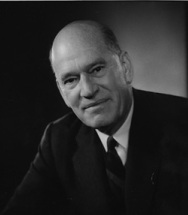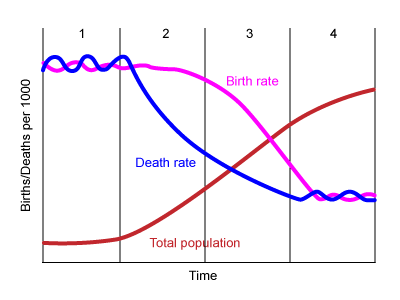The demographic transition

Frank W. Notestein (1902-1983)
To understand the variety of demographic regimes found across the world, it is necessary to understand the history of demographic change globally.
The demographic transition theory is a generalised description of the changing pattern of mortality, fertility and growth rates as societies move from one demographic regime to another. The term was first coined by the American demographer Frank W. Notestein in the mid-twentieth century, but it has since been elaborated and expanded upon by many others.
There are four stages to the classical demographic transition model:
- Stage 1: Pre-transition
- Characterised by high birth rates, and high fluctuating death rates.
- Population growth was kept low by Malthusian "preventative" (late age at marriage) and "positive" (famine, war, pestilence) checks.
- Stage 2: Early transition
- During the early stages of the transition, the death rate begins to fall.
- As birth rates remain high, the population starts to grow rapidly.
- Stage 3: Late transition
- Birth rates start to decline.
- The rate of population growth decelerates.
- Stage 4: Post-transition
- Post-transitional societies are characterised by low birth and low death rates.
- Population growth is negligible, or even enters a decline.
These four stages are depicted on the graph below.
